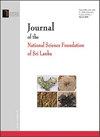Land-use and land cover changes along the coastal belt of Hambantota district, southern Sri Lanka, over the period 1996- 2017
IF 0.4
4区 综合性期刊
Q4 MULTIDISCIPLINARY SCIENCES
Journal of the National Science Foundation of Sri Lanka
Pub Date : 2024-01-02
DOI:10.4038/jnsfsr.v51i4.11286
引用次数: 0
Abstract
Through the years, the green cover has been substantially reduced and transformed into human development projects and settlements in many cities of Sri Lanka. Hambantota, a southern coastal district, has faced similar changes over the last two decades. Therefore, this study was aimed at the Land-Use and Land-Cover (LULC) changes which had taken place along its coastal belt during the period, 1996–2017. Comparison was done among LULC maps bearing fourteen different classes for the years 1996 and 2017. The results reveal that all LULC classes except coconut plantations and paddy lands show significant area changes (p < 0.05) during the period considered. Among the LULC changes, forest cover showed the highest area change (2341 ha loss (p < 0.05)) while 358 ha of scrubland has been cleared to establish housing schemes. The settlements have significantly increased (1318 ha) and a considerable amount is due to development projects including the Hambantota port. The survey results show that 63.9% of the residents in the study area agreed that the natural environment of the city had been affected by the development projects. Analysis of LULC changes and Normalized Difference Vegetation Index (NDVI) data suggests that Hambantota coastal area has developed significantly at the cost of forests and associated vegetation from 1996 to 2017. Rapid economic and population growths are identified as the main driving forces for the LULC changes. These results deliver an important decision-making reference for LULC planning and sustainable development in the Hambantota coastal region, which is, in broad sense, valid for any booming city in the country and the world. The urban forestry concept can be an ideal sustainable move to compensate the green cover loss.1996 年至 2017 年期间斯里兰卡南部汉班托塔县沿海地带的土地利用和土地覆被变化情况
多年来,斯里兰卡许多城市的绿化覆盖面积大幅减少,变成了人类发展项目和定居点。汉班托塔作为南部沿海地区,在过去二十年中也面临着类似的变化。因此,本研究旨在探讨 1996-2017 年间沿海地带的土地利用和土地覆被 (LULC) 变化情况。对 1996 年和 2017 年带有 14 个不同等级的 LULC 地图进行了比较。结果显示,除椰子种植园和水稻田外,所有土地利用、土地利用变化类别在研究期间都显示出显著的面积变化(p < 0.05)。在 LULC 变化中,森林覆盖面积变化最大(损失 2341 公顷(p < 0.05)),同时有 358 公顷的灌木林被清除,以建立住房计划。定居点大幅增加(1318 公顷),其中相当一部分是由于包括汉班托塔港在内的开发项目。调查结果显示,63.9% 的研究区居民认为城市的自然环境受到了开发项目的影响。对土地利用、土地利用变化和归一化差异植被指数(NDVI)数据的分析表明,从 1996 年到 2017 年,汉班托塔沿海地区以森林和相关植被为代价实现了大幅发展。经济和人口的快速增长被认为是 LULC 变化的主要驱动力。这些结果为汉班托塔沿海地区的土地利用、土地利用变化规划和可持续发展提供了重要的决策参考,从广义上讲,也适用于国内和世界上任何一个蓬勃发展的城市。城市林业概念是弥补绿化覆盖损失的理想可持续举措。
本文章由计算机程序翻译,如有差异,请以英文原文为准。
求助全文
约1分钟内获得全文
求助全文
来源期刊

Journal of the National Science Foundation of Sri Lanka
MULTIDISCIPLINARY SCIENCES-
CiteScore
0.90
自引率
0.00%
发文量
57
审稿时长
>12 weeks
期刊介绍:
The Journal of National Science Foundation of Sri Lanka (JNSF) publishes the results of research in Science and Technology. The journal is released four times a year, in March, June, September and December. This journal contains Research Articles, Reviews, Research Communications and Correspondences.
Manuscripts submitted to the journal are accepted on the understanding that they will be reviewed prior to acceptance and that they have not been submitted for publication elsewhere.
 求助内容:
求助内容: 应助结果提醒方式:
应助结果提醒方式:


